Bird News from Nial Moores
The first heavy rain of the spring in Busan fell from early afternoon on the 17th (when single Western Osprey and Eurasian Woodcock in Igidae were the highlights in three wet hours of observation) through to the early morning hours of the 18th. A full day (0630-1900) was therefore spent in the park on the 18th with overcast conditions clearing by mid-afternoon, though feeling cool (c. 15C) in occasionally moderate north-easterlies. As on April 18th 2013, counts of all birds heard and seen were made covering the two main streams, “Sakhalin Stream”, SK area (where construction continues) and back along the main road through the centre of the park. In addition, an hour (11:45-12:45) was spent watching the sea off from SK. In total, 65 species were logged, Names and order follow the newly-posted 2014 Birds Korea Checklist:
- Red-breasted Merganser Mergus serrator. Two.
- Common Pheasant Phasianus colchicus. A total of 14 heard and seen.
- Arctic Loon Gavia arctica. Two in intermediate plumage south, followed soon after by seven unidentified loons in non-breeding plumage further out also flying south.
- Streaked Shearwater Calonectris leucomelas. In total, 102 north in one hour, almost all in the first 20 minutes.
- Great Crested Grebe Podiceps cristatus. One in full breeding-plumage.
- Pacific Reef Heron Egretta sacra. One on the “usual” rocks near SK.
- Pelagic Cormorant Phalacrocorax pelagicus. Three Second Calendar-years.
- Temminck’s Cormorant Phalacrocorax capillatus. Twenty in various plumages off SK.
- Black Kite Milvus migrans. Two adults, calling frequently.
- Eastern Buzzard Buteo japonicus. One still.
- Little Ringed Plover Charadrius dubius. One on open ground in front of SK.
- Black-tailed Gull Larus crassirostris. The most numerous gull, with 10+ blogging over the sea and a further 20 roosting up on tetrapods and seawalls.
- Common Gull Larus canus. At least three off SK.
- Vega Gull Larus vegae. At least one off SK.
- Mongolian Gull Larus mongolicus. At least three, and possibly up to 10, off SK.
- Taimyr Gull Larus heuglini taimyrensis. One adult showing very worn upperwing coverts off SK.
- Pomarine Skua Stercorarius pomarinus. One poorly digiscoped pale morph adult with full spoon flying north over the sea off SK. There are rather few mainland records in spring.
- Murrelet Synthliboramphus sp. Three north off SK.
- Oriental Turtle Dove Streptopelia orientalis. Eleven heard or seen.
- Pacific Swift Apus pacificus. Approximately ten, most at SK.
- Japanese Pygmy Woodpecker Dendrocopos kizuki. Six.
- White-backed Woodpecker Dendrocopos leucotos. Excellent views of an adult male.
- Grey-headed Woodpecker Picus canus. One.
- Peregrine Falcon Falco peregrinus. Two or more probably three.
- Ashy Minivet Pericrocotus divaricatus. Five plus.
- Bull-headed Shrike Lanius bucephalus. One.
- Eurasian Jay Garrulus glandarius. At least eight.
- Eurasian Magpie Pica pica. At least 18, including several nest-building.
- Large-billed Crow Corvus macrorhynchos. Ten.
- Bohemian Waxwing Bombycilla garrulus. One still.
- Japanese Waxwing Bombycilla japonica. About 10 still present in the morning; not heard in the afternoon.
- Coal Tit Periparus ater. Four heard singing.
- Varied Tit Sittiparus varius. Only two.
- Marsh Tit Poecile palustris. Only one.
- Eastern Great Tit Parus minor. A total of 42 heard or seen.
- Brown-eared Bulbul Hypsipetes amaurotis. Hard to count accurately but 79 counted as heard or seen.
- Barn Swallow Hirundo rustica. Three singles.
- Korean Bush Warbler Horornis borealis. One in song.
- Asian Stubtail Urosphena squameiceps. Seven, all in the morning.
- Long-tailed Tit Aegithalos caudatus. Seventeen.
- Pallas’s Leaf Warbler Phylloscopus proregulus. One heard in song (as on almost the same data last year). This is a scarce species in the southeast of the country.
- Sakhalin Leaf Warbler Phylloscopus borealoides. A minimum of two: one or two in song (sound-recorded) and one calling. One additional bird heard calling briefly was either this species or more likely a Pale-legged (the call is subtly but distinctly different). This follows on from two or three heard here and one sound-recorded on April 17th and 18th 2013 (these among the first mainland records).
- Eastern Crowned Warbler Phylloscopus coronatus. A total of 11 heard or seen.
- Vinous-throated Parrotbill Sinosuthera webbiana. A total of 146 seen and heard (172 were counted on the same date here last year).
- Japanese White-eye Zosterops japonicus. Thirty-two.
- Goldcrest Regulus regulus. Five, including one in song.
- White’s Thrush Zoothera aurea. Six.
- Grey Thrush Turdus cardis. At least two adult males.
- Pale Thrush Turdus pallidus. Twenty-eight.
- Dusky Thrush Turdus eunomus. One at SK.
- Asian Brown Flycatcher Muscicapa latirostris. At last five together in “Sakhalin Stream”.
- Blue-and-White Flycatcher Cyanoptila cyanomelana. Nine in total, with seven nominate males (many of which were Second Calendar-years and several of which were singing) and two females.
- Siberian Blue Robin Larvivora cyane. One in song.
- Japanese Robin Larvivora akahige. One adult male briefly feeding on berries in a tree about 2m up.
- Narcissus Flycatcher Ficedula narcissina. Four male narcissina (including two singing and one obviously Second calendar-year individual) and one apparent Second calendar-year male owstoni. Tentative identification of this tricky individual was based on several features outlined in our online ID note (at: http://birdskorea.org/Birds/Identification/ID_Notes/BK-ID-Narcissus-Flycatchers-types.shtml ) including: (1) retention of much immature plumage; (2) yellow feathering of emergent supercilium apparently extending to base of bill; (3) lack of strong red-orange in throat feathering; (4) pale base to apparently deep-looking bill; and (5) large area of white on the wing, including what appeared to be a pale spur on the left side (unfortunately not digiscoped clearly). While narcissina occurs regularly on the mainland and on offshore islands during northward migration, owstoni is much less-often recorded / reported with perhaps all claims to date confined to islands in the west and southwest…
- Daurian Redstart Phoenicurus auroreus. Four.
- Blue Rock Thrush Monticola solitarius. Four.
- Eurasian Tree Sparrow Passer montanus. Found only around SK, where about 25 present.
- Grey Wagtail Motacilla cinerea. Two.
- White Wagtail Motacilla alba. One.
- Buff-bellied Pipit Anthus rubescens. One.
- Grey-capped Greenfinch Chloris sinica. Seven.
- Eurasian Siskin Spinus spinus. Only one heard (even though a few dozen were present earlier in the week).
- Tristram’s Bunting Emberiza tristrami. One.
- Yellow-throated Bunting Emberiza elegans. Eighteen in total.
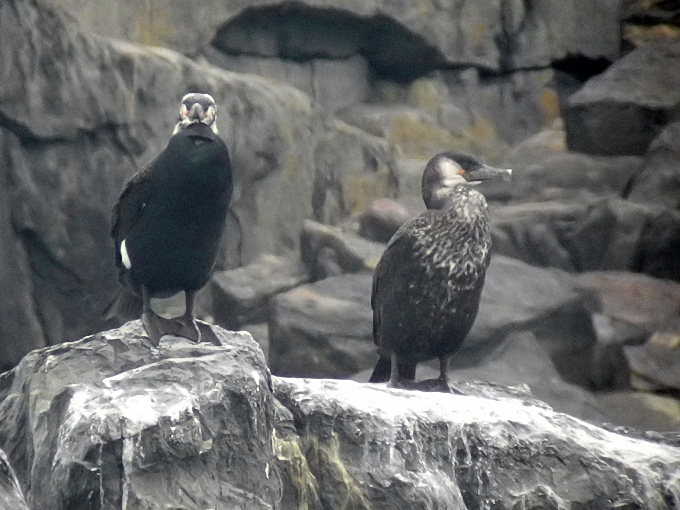 Temminck’s Cormorant Phalacrocorax capillatus, © Nial Moores
Temminck’s Cormorant Phalacrocorax capillatus, © Nial Moores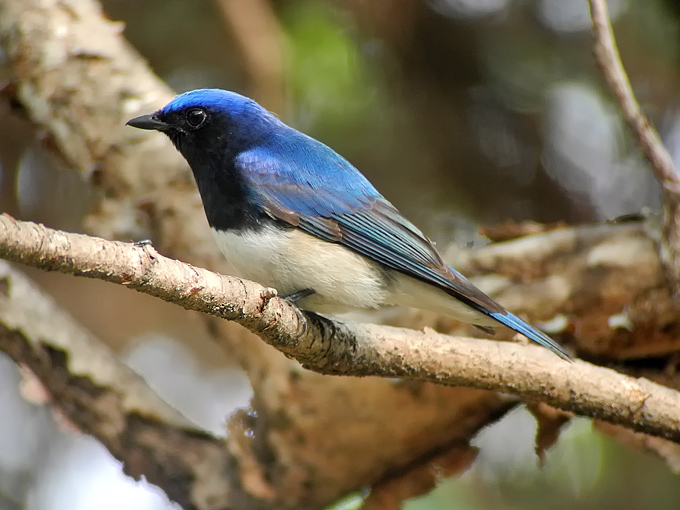 Blue-and-white Flycatcher Cyanoptila cyanomelana, © Nial Moores
Blue-and-white Flycatcher Cyanoptila cyanomelana, © Nial Moores
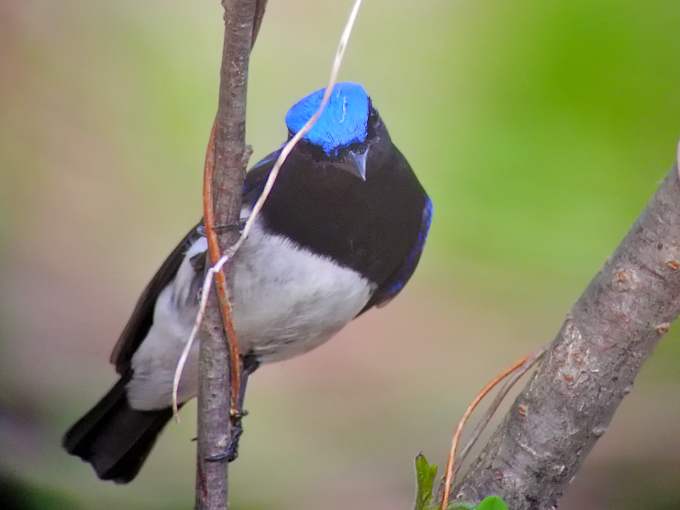 Blue-and-white Flycatcher Cyanoptila cyanomelana, © Nial Moores
Blue-and-white Flycatcher Cyanoptila cyanomelana, © Nial Moores
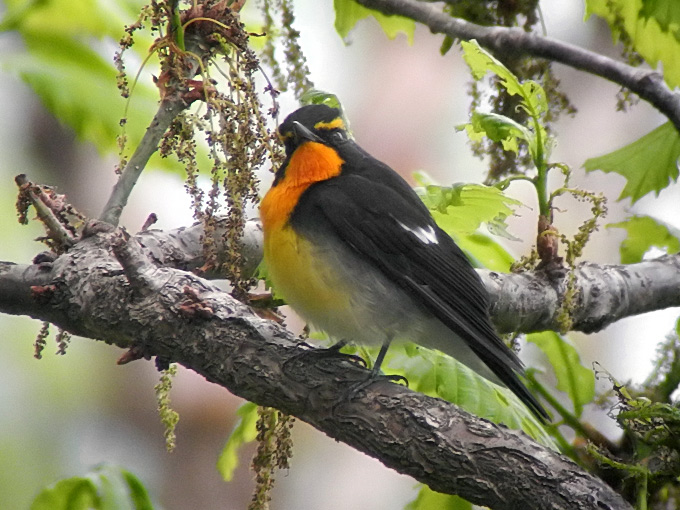 Narcissus Flycatcher Ficedula narcissina narcissina, © Nial Moores
Narcissus Flycatcher Ficedula narcissina narcissina, © Nial Moores
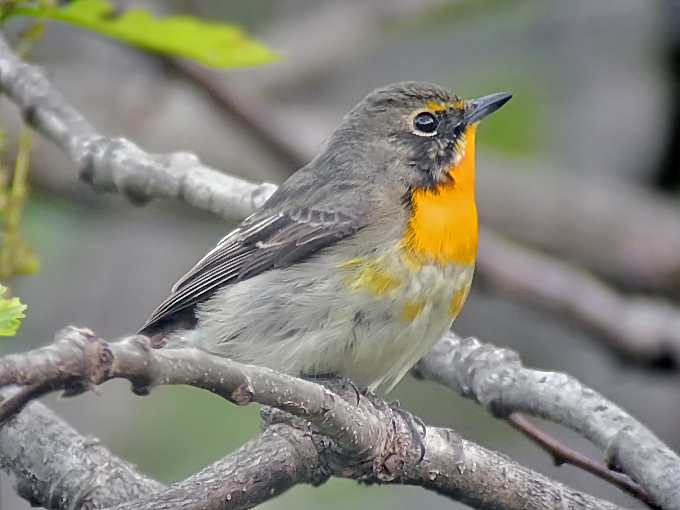 Narcissus Flycatcher Ficedula narcissina owstoni, © Nial Moores
Narcissus Flycatcher Ficedula narcissina owstoni, © Nial Moores
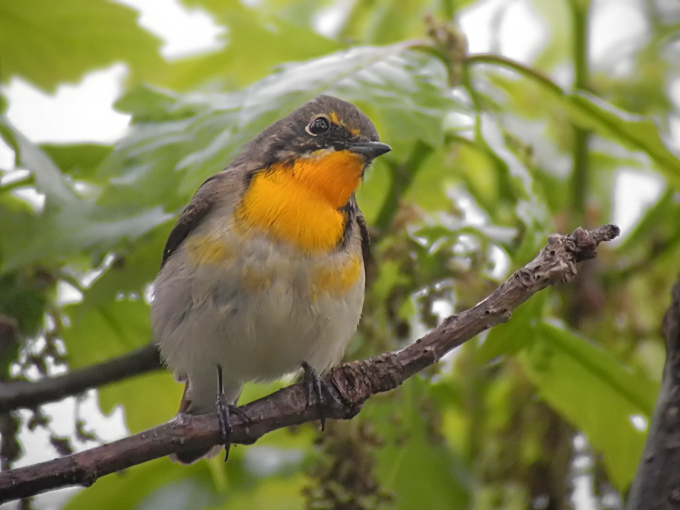 Narcissus Flycatcher Ficedula narcissina owstoni, © Nial Moores
Narcissus Flycatcher Ficedula narcissina owstoni, © Nial Moores
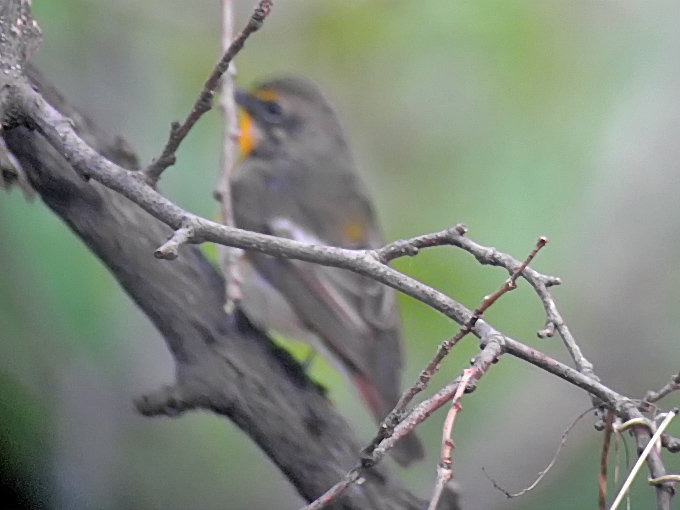
 Grey-capped Greenfinch Chloris sinica, © Nial Moores
Grey-capped Greenfinch Chloris sinica, © Nial Moores
